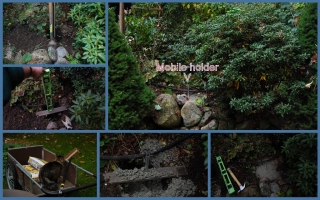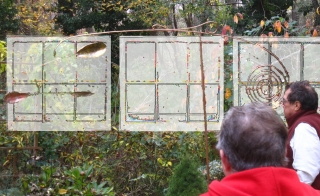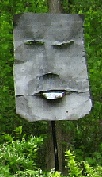Posts Tagged ‘design’
My Sister’s New Garden
My sister’s new garden is nestled within hilly SW Portland. It is compact and lush. I didn’t realize you could harbor such variety and fullness in a small space. Chalk it up to my sister’s sense of order and tidiness.
Meandering nasturtiums splay over the edge of the patio. They thrive on the concrete’s radiant heat.
A curvy flagstone path wends into the back corner, as if there were more to see just around the bend. Crocosmia has nearly finished blushing scarlet; a few sunflowers reach skyward (why aren’t the centers going black, she wants to know).
In their midst stand gayfeather (liatris spicata) and a staked tomato!
The piece de resistance anchors the back wall – two significant clumps of bamboo confined to an elegant wood planter she purchased up the coast. It is both an appreciation of things past and a recognition of bamboo’s beauty constrained by reality: you don’t want these aggressive grasses overrunning your main garden.
My sister tends her new garden with care and delight. Whimsey and prudence. Premeditation and pluck.
The first thing she installed was the incandescent string of lights vining the translucent, shed-like roof over the sitting area, which is the perfect place for enjoying the flora while reading, writing, sipping – or, finding a brother savoring Sauvie Island Blueberries with Barbados Cream. Heaven.
Garden Mind
I got the White Flower Farm Spring 2012 catalog this week. It’s a page turner as usual, with saturated floral images of garden gems in perfect flower – where the reds are redder, the greens greener and the true blues truer than life. One day, there might be a garden catalog with wilted, spent flowers going to seed. Unlikely.
My garden overwinters – stark and dreary, especially without frost or snow cover. I hope it gets cold enough to kill the bad bugs; I hope there is enough snow cover, eventually, to supplement the good stuff (my brother told me snow is the poor man’s fertilizer). But, I digress. What is really at work is stillness. No growth, just the remnants of the garden being earth bound — skeletal, essential, and creating reserves for the proper blooming time.
What I have is garden mind.
Our garden (aka, “R” Garden) sits, while last year’s beauty decomposes into next year’s growth. I see the garden’s shape from our upstairs window – the straight and curvy lines, the beds, the flow from one section to another joined by lawn, paths, steps, and bridges. I like this flow and work to refine it in my mind: firm up that edge with a low border, trim that shrub to be a better neighbor, hack that pachysandra, reset those stones, et cetera. In a process of refinement, endless tweaking shapes the garden and morphs its profile. Its essential personality, established long ago, matures incrementally, bringing charm, whimsy and nature into harmony improved by age.
Of course it’s a living thing and changes occur, apparently spontaneously, as well. Like the clumping bamboo that finally, finally decided to become the screen I imagined ten years ago. Who knew it would take this long? I suppose that’s where annuals come in. They provide the instant gratification that delights the eye and other senses. Not much mystery but adornment galore and great expectations easily met. We enjoy the splash, the visual spice, and the abundance of blooms overlaying the perennial foundation.
The garden mind dwells on ideas and suffers no toil. No: weeding, spraying, mowing, aching backs or biting no-see-ums. It sees golden possibilities; it harbors hopes and plans — flights of fancy that could occupy the whole of next season. It’s a great place to visit.
Herbs – the spice of life
When late afternoon arrives in our patch of yard, we turn on the reading lights. That’s because we live in dappled shade and shadows from our forested northeastern exposure. 1/2 block away it’s full sun, while we’re calling it a day.
One outcome of our scant daylight is we don’t grow food, or anything else that requires full sun. Which is OK by me because my short stint as a food grower was neither a personal or agricultural success.
Consumers are people, too
I support the concept of growing your own nutrition, but I do not support the worry: fungus, beetles, blight, cut worms, watering, fertilizing, weeding, thinning, fencing and harvesting gallons of one thing (I hope you like squash, dear). And then, it starts again next year. From scratch.
Do I lack intestinal fortitude? No, I just can’t tolerate the suspense of bringing in a crop. I gladly shop for local produce. Just leave me to my perennials.
Best of both worlds
I designed my garden for other senses – mind, eye, nose
– outdoor spaces, fragrant offerings, inspiring creations, intriguing curves, mini-vistas and low maintenance. OK, I pamper the roses a bit. Everything else weathers; a planting survives and thrives or … succumbs. Perennial pragmatism.My one exception: herbs and annuals in pots. I hate buying fresh mint at the supermarket. Ditto parsley, sage rosemary and thyme, invariably expensive or trucked from Mexico. In pots, these herbs unfailingly just grow, and without fuss — my kind of crop! They satisfy my gardening principles while providing a culinary and aesthetic je ne sais quoi.
Besides the flavor-your-food value of herbs, groupings of pots in different shapes and sizes partition and highlight an area, add graceful greenery / vivid accents, and blend practical herbs with vibrant annuals (my fave – nasturtium with lobelia). Pots of varying sizes, habitats and materials punctuate my external rooms.
I have a few herbal and non-herbal relics that winter over — bits of this and that: liatris spicata, lamium “White Nancy”, dicentra, ferns. Even my potted oregano returns each year and mint, running freely in the perennial beds, is rampant. While they do not survive Zone 6A winter, I’ve harvested parsley in late December and rosemary in January. First frost does in the basil – it’s known as a tender perennial.
Terracotta and Not
I use both clay pots and plastic pots. Classic terracotta (literally baked earth, unglazed clay) is porous, warm and weathered. Saucers under the clay pots extend the watering effect. Plastic scores lower for aesthetics but meets the low maintenance requirement because it conserves moisture much better than terracotta. That means less stress on the plants and less work for me.
I’ve taken to the heavily glazed, gigantic earthenware pots from Vietnam. They conserve water, do not crack like terracotta and make a bold statement that anchors a grouping of smaller pots. Filled with soil, they stay put!
Global watering
For pots that need chronic watering, I discovered a remedy that works pretty well — the glass watering globes that you fill with water and stick into the potted soil.
In the past I had tried mixing in the gelatinous granules (polymers) that soak up water and then release it to the plants. It’s a clever idea that doesn’t work well. Mostly the granules expand beyond reason, force the soil out of the pot, and don’t deliver much water to the roots of your potted plants. My experience is supported by research.Food for Thought
While my aesthetic vision continues to conjure up garden designs, I find joy in snipping fresh rosemary, basil, and perennial mint into my cuisine, or pinching a spicy nasturtium flower to decorate dinner. It’s another way I delight my soul.
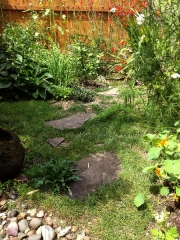
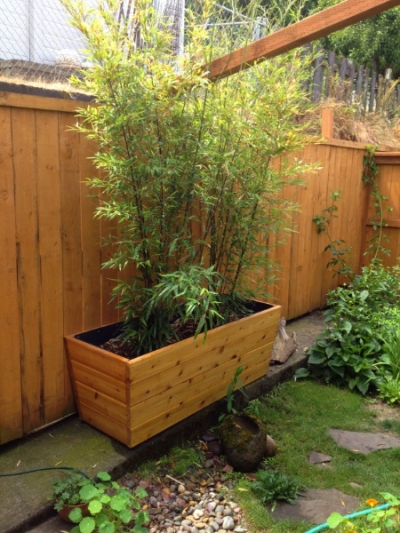
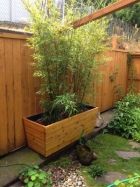
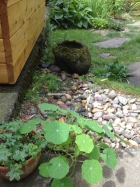
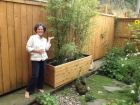



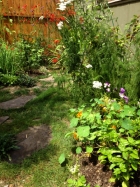
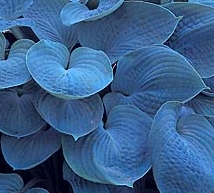
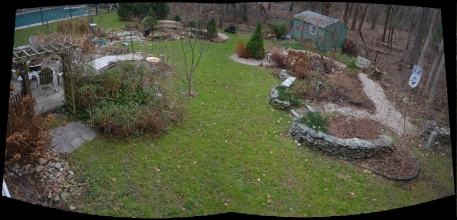

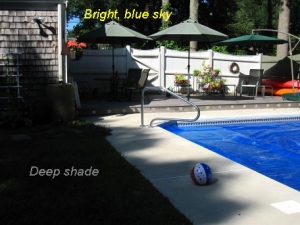

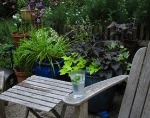 pots-with-chair
pots-with-chair potted-herbs-annuals
potted-herbs-annuals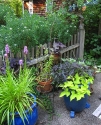 pots-with-chair2
pots-with-chair2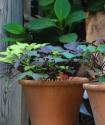 pots-sweetpotato
pots-sweetpotato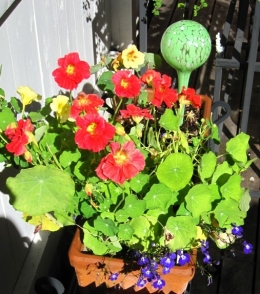

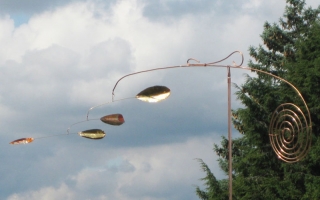
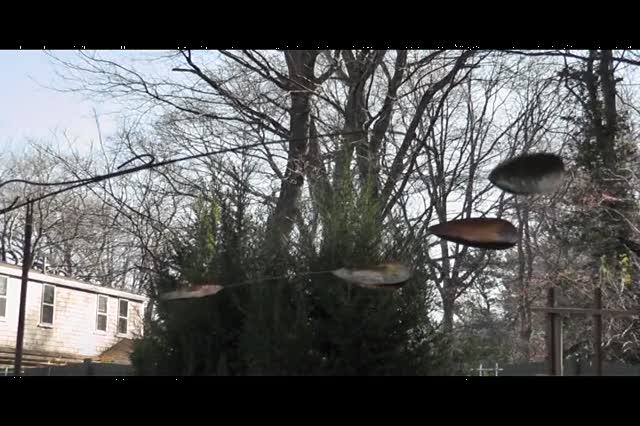
 sarabande-in-snow-4
sarabande-in-snow-4 sarabande-in-snow-5
sarabande-in-snow-5 Sarabande In Snow 2
Sarabande In Snow 2